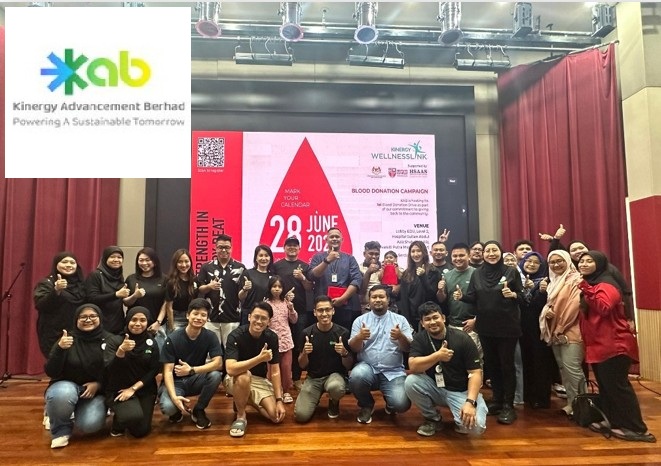THE residential overhang in the property sector is expected to worsen this year. Hence, accessibility and infrastructure developments are key to unlocking new hotspots or growth areas for 2020.
Less than 15 km from the city centre, Batu Caves is one of the potential areas recognised to become the next investment hotspot.
It is synonymous with its magnificent ancient limestone hills and caves featuring a more-than-a-century-old Hindu temple which has drawn devotees from around the world. The Batu Malai Sri Murugan Temple in Batu Caves is also one of Malaysia’s top tourist spots.
Zerin Properties Sdn Bhd group CEO Previndran Singhe says the property prices in Batu Caves area are lower and much more affordable than those of properties in its surroundings, for instance in Selayang, Jalan Ipoh and Jalan Kuching.
“This factor has made the residential properties in Batu Caves more attractive to house buyers, particularly those in the low and middle-income categories.
“Newer high rise developments, namely Taman Raintree and Symphony Heights, have drawn high demand from home buyers in comparison to older landed properties in the area,” he tells FocusM.
He says Eco World Development Group Bhd’s integrated development and other ongoing developments in Taman Wahyu by developers such as Mah Sing Group Bhd and JL99 Group Sdn Bhd will have a spillover effect on Batu Caves due to the proximity of these locations.
Taman Wahyu is a residential area in Kampung Batu whose population is Chinese-dominated but this does not mean that there is little interest among other races in the properties there. While it is not widely regarded as a hotspot, the demand for residential properties in the enclave has been rising steadily.
There has also been an increase in land and industrial property transactions there over the past year which suggests that property development projects are in the pipeline.
General manager Magdelin Tan of online portal PropSocial says Batu Caves is divided into two parts – one within Kuala Lumpur and the other in Selangor – and its immediate vicinity hosts about 71,000 people. They are predominantly Malay at nearly 64%, followed by Indians (18.6%), Chinese (11.5%) and other Bumiputeras and non-Malaysians.
“The neighbourhood of Batu Caves is one that offers affordable housing in proximity to the city, along with excellent highway connections. The majority of the residents here are in the lower-middle and middle-income group,” she points out.
Moreover, the suburb is close to prime areas, making it suitable for the redevelopment of older buildings, as well as potential projects for its pockets of undeveloped land.
The last few years saw a spurt in residential development within Batu Caves with developers like Hua Yang Bhd building its first high-rise project Symphony Heights, Impiana Land & Development Sdn Bhd with Taman Raintree and Jaya Megah Development Sdn Bhd offering Amara Boulevard and Serviced Residences.
Over the last two decades, several industrial estates have also been developed in Batu Caves including Batu Caves North Industrial Park, Spring Crest Industrial Park and Taman Industrial Dolomite.
Today, properties in Batu Caves comprise single to 4½-storey shophouses and shopoffices, single and double-storey terraced houses and 4-storey and 5-storey low- and medium-cost apartments, 1½- to 3-storey terraced factories, double-storey semi-detached factories and detached factories.
Value proposition
According to Previndran, the scarcity of land, proximity to Kuala Lumpur city centre and spillover effect from the Taman Wahyu developments as well as sprawling urbanisation will result in increased land value in Batu Caves.
“(This is despite the fact that) at present there are no plans for new railways such as light rapid transit (LRT) and mass rapid transit (MRT) lines for Batu Caves.
“Notwithstanding this, existing developments such as Amara Boulevard and Serviced Residences which are located within 500m walking distance from the KTM Batu Caves station are considered as transit-oriented development (TOD),” he said.
On the other hand, he also mentions that existing developments in the likes of Putri Laksamana and Taman Raintree, situated 650m and 750m respectively from KTM Batu Caves, also fall under the transit-adjacent development (TAD) category.
Other than that, trains running through the Batu Caves KTM Station also link with the KTM Port Klang Line, Seremban Line and Skypark Link.
He adds that currently, Batu Caves is not attracting multinational companies, adding: “MNCs prefer to be located close to financial/business districts and within MSC status/Grade A buildings. Notwithstanding that, a few MNCs do have their manufacturing facilities there.”
Nawawi Tie Leung Real Estate Consultants managing director Eddy Wong believes that the presence of industrial properties located in Batu Caves could be one of the factors that have impacted its residential property demand and prices.
“Traditionally, industrial estates are sited adjacent to residential properties of the lower market segments with the intention of providing for the labour pool for the industrial estates.
“This has of course changed over the years as the workers in the industrial or manufacturing activities now come from everywhere and not just from the immediate vicinity. But the association between industrial properties and lower-end homes persists,” he says.
He adds that other possible factors could be the profile of the existing population in Batu Caves, which is from the middle- to low-income category, most possibly from the legacy of being located close to the industrial activities.
However, “this will change with the development of new projects which are selling at a higher price point, which will house residents of higher-income levels reflective of the price points of the new developments,” Wong shares.
Key attraction
Apart from its limestone hill which comprises three major caves and a number of smaller ones, as well as its 100-year-old temple, Batu Caves is an important religious landmark for those of the Hindu faith.
Cathedral Cave, the largest and most popular cavern, houses several Hindu shrines beneath its 100m-high ceiling. A 42.7m high statue of Lord Murugan, the tallest statue of the deity in the world unveiled in January 2006, is hard to miss as Batu Caves’ centrepiece.
In 2018, the famous Batu Caves Hindu temple was given a facelift with a striking rainbow-coloured staircase as part of its refurbished project. The refurbishment costing RM5.5 mil helped embellish its status as one of the major tourism hotspots not just in Kuala Lumpur but also the country.
Batu Caves is also the site for outdoor activities such as spelunking/caving, rock climbing and abseiling.
Batu Caves offers more than 160 climbing routes. The routes are scattered all around Batu Caves, which is made up of limestone hills rising to 150m. These climbing routes are easily accessed as most crags start at ground level.
These climbing routes often start from the north eastern side of the cave complex whereas the staircase and temple entrance face the south. This northeastern area is known as the Damai caves. Abseiling and spelunking trips can be organised with some local adventure companies.
Apart from being a tourist attraction, there are about 50 housing projects in this neighbourhood, according to PropSocial’s data. It also has 41 schools and institutions of higher education, 28 convenience stores, 14 supermarkets and markets, as well as a shopping complex.
In addition, there is a Tesco hypermarket outlet at the border of Batu Caves and Taman Wahyu.
According to property developer KIP Group group CEO Valerie Ong, the company believes the properties in Batu Caves have potential, particularly because the upgrades of major highways such as Jalan Kuching, Duke (Duta-Ulu Klang Expressway) and MRR2 (Middle Ring Road 2) have made this area very accessible.
Rising values
Ong says the property value of Batu Caves and its vicinity has been steadily rising over time.
“Batu Caves is also very close to Genting Highlands, which is another tourist spot,” she says, pointing out that this also helped to boost property prices.
MNP Auctioneers (Central) Sdn Bhd chief operating officer and property blogger Charles Tan says since 2013, “the average price of residential properties is very close to RM500,000 a unit,” he says.
“The property market, on the whole, has actually slowed down since 2013 and yet Batu Caves is seeing a rise in the number of transactions.
“This shows that when an area is less than 20 minutes away from the Kuala Lumpur city centre and the price is still considered on the lower side, it will become more popular,” he says.
According to PropSocial’s Tan, the average rent listing rates for non-landed property in Batu Caves is RM1.37 psf compared to landed property at RM1.43 psf. The average rent listing rate for commercial property is RM1.64 psf.
Compared to nearby Selayang, the rental rates in Batu Caves are higher than its eastern neighbour’s RM1.29 psf (for non-landed property) and RM1.04 psf (landed property). To the west of Batu Caves, Gombak shows it has a stronger demand with average rent and landed property rates of RM2.11 psf and RM1.78 psf, respectively.
However, even within Batu Caves, certain properties have better rent yields than others, says the property agent.
For example, Amara Boulevard and Serviced Residences has an average yield of 4.8%, Taman Raintree gives 4.2% and Banjaria Court 4.9%, she says.
Amara Boulevard & Serviced Residences is among the non-landed properties in Batu Caves
Amara’s rentals are from RM950 to RM2,500 for built-ups of 829 to 1,983 sq ft while Taman Raintree’s condos and houses are let out from RM900 to RM2,350 for units measuring from 926 and 1,227 sq ft.
In contrast, Banjaria Court fetches rentals of RM1,000 to RM2,550 for units sized from 892 to 1,314 sq ft.
Naturally, the better-maintained properties would see better yields, the property agent adds. – Feb 5, 2020
[box] Time for gentrification?
Every year, Batu Caves serves as the focus of the Hindu community’s Thaipusam festival. It has become a pilgrimage site not only for Malaysian Hindus but Hindus worldwide. This worsens the already existing traffic congestion problem there.
While the government had in the past acquired land to widen Jalan Batu Caves and other roads in the neighbourhood, traffic congestion, upgrading of infrastructure and finding land for new developments in that area remain challenging.
It was reported that most of the affordable houses and apartments available are old while land available for new developments is very limited.
It said the challenge the Batu Caves housing market faces is the presence of industrial activities which are generally incompatible with higher-end residential developments.
[/box]









